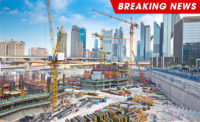The American Iron and Steel Institute (AISI) has published three test standards in its S900-series. All test standards have been approved by the American National Standards Institute (ANSI) and are available for downloading free of charge at www.aisistandards.org.
The test standards include:
- AISI S914-15, Test Standard for Joist Connectors Attached to Cold-Formed Steel Structural Framing, 2015 Edition– This standard, which replaces AISI S914-13, provides a method for determining the strength and deformation behavior of joist connectors used in cold-formed steel light-frame construction. In this edition, changes are made to allow the 1/8-inch deflection limit to exclude the initial deflection up to 10 percent of the ultimate load for gravity loading only.
- AISI S915-15, Test Standard for Through-the-Web Punchout Cold-Formed Steel Wall Stud Bridging Connectors, 2015 Edition-AISI S915 is a new test standard that provides the methodology to determine the strength and deformation behavior of through-the-web punchout bridging connectors for cold-formed steel wall stud bracing for nonstructural and structural wall studs in light-frame construction. This standard applies to bridging connectors attached to a cold-formed steel wall stud and the bridging member by mechanical fastening.
- AISI S916-15, Test Standard for Cold-Formed Steel Framing – Nonstructural Interior Partition Walls With Gypsum Board, 2015 Edition- AISI S916 is a new test standard that establishes a rational method of determining the strength and stiffness of nonstructural interior partition wall assemblies framed with cold-formed steel. In addition to the cold-formed steel framing, gypsum board panels are considered part of the wall assembly. This standard provides an alternative to the calculation of capacity based on AISI S100, North American Specification for the Design of Cold-Formed Steel Structural Members. It also permits manufacturers to determine limiting height values for the assemblies.
AISI test standards are updated every five years and facilitate research and development leading to improved state-of-the-art solutions in steel for the construction market. They are often referenced in industry acceptance criteria, and lead the way in establishing the performance characteristics of unique products and applications.

